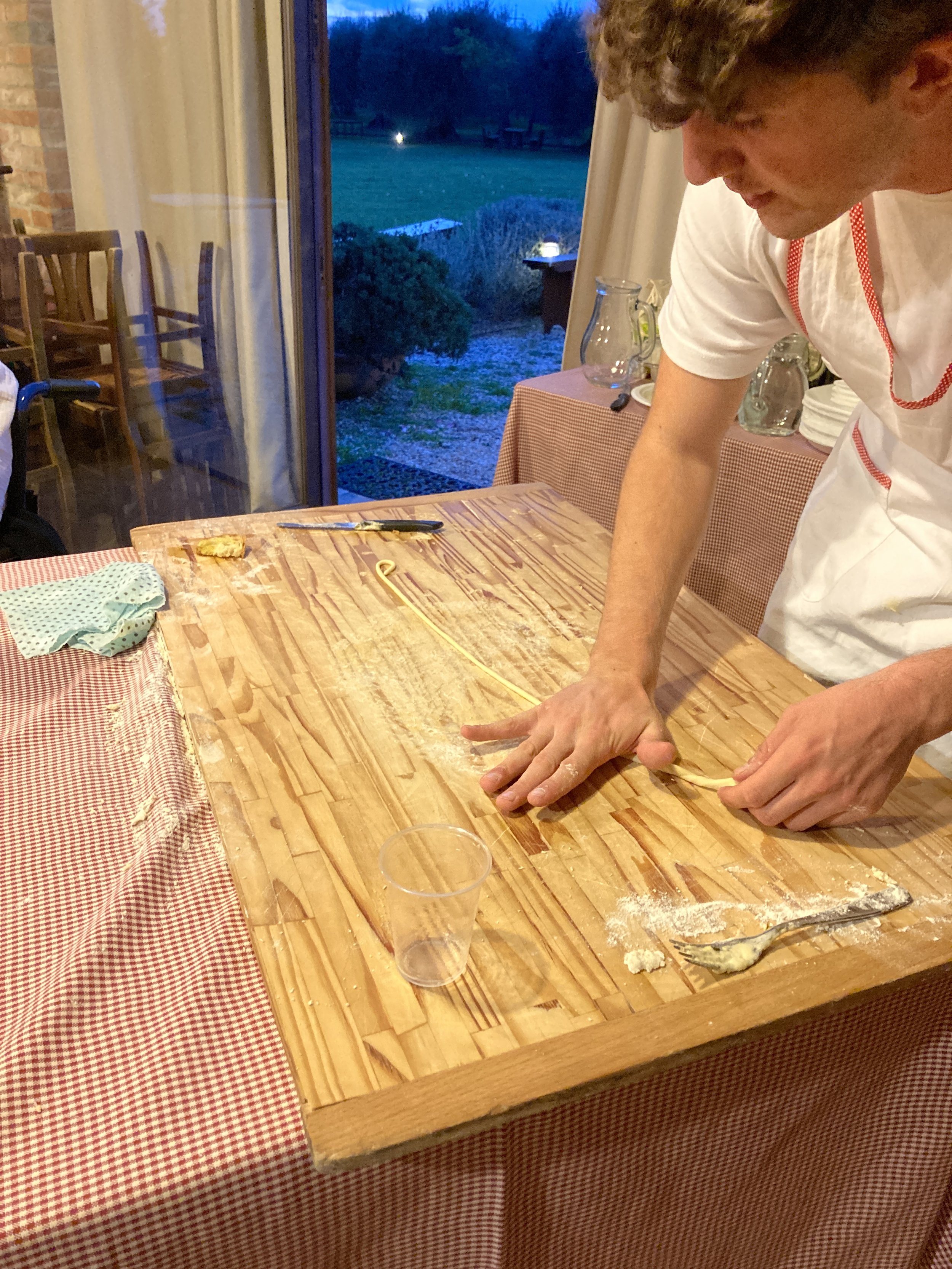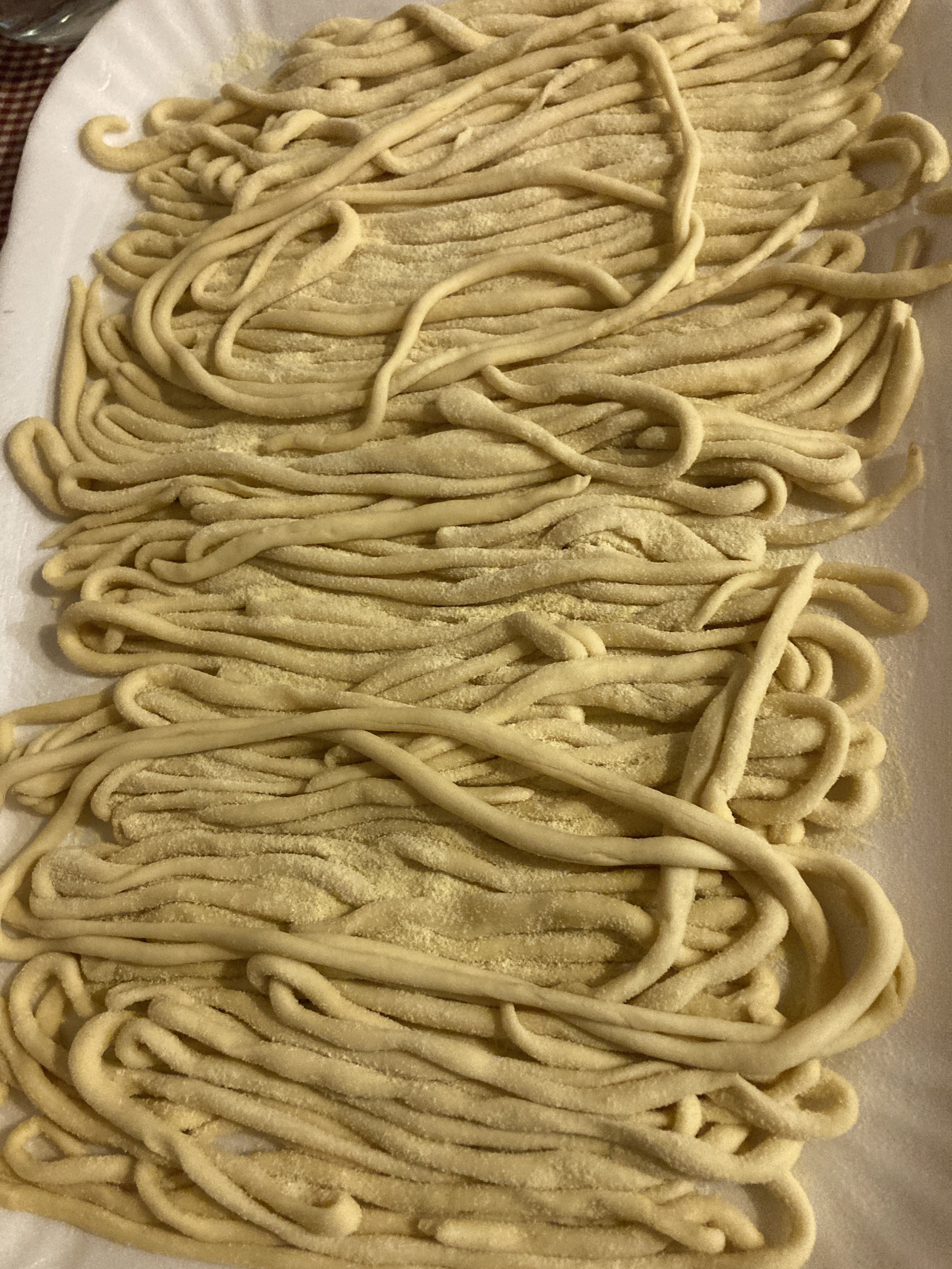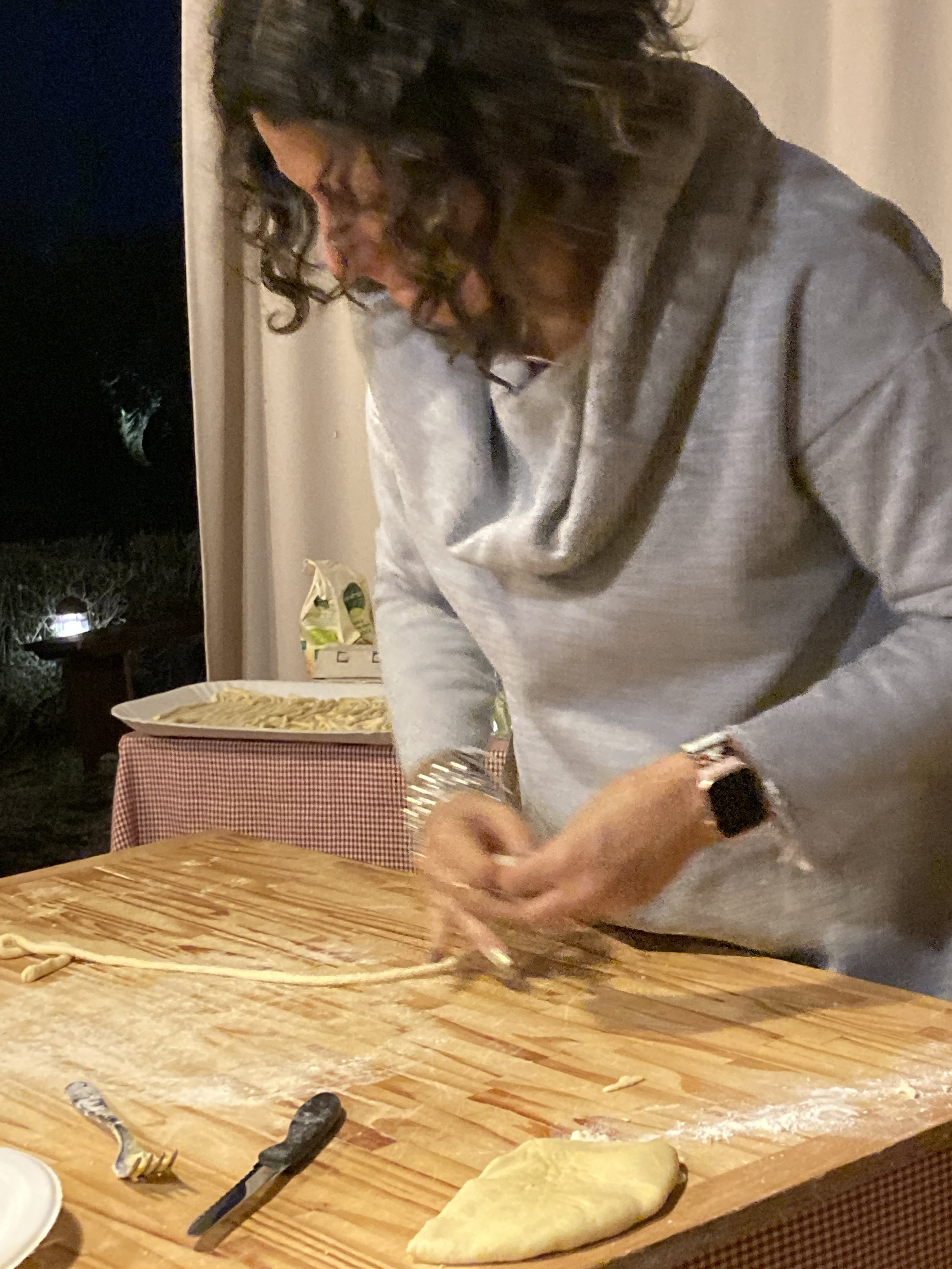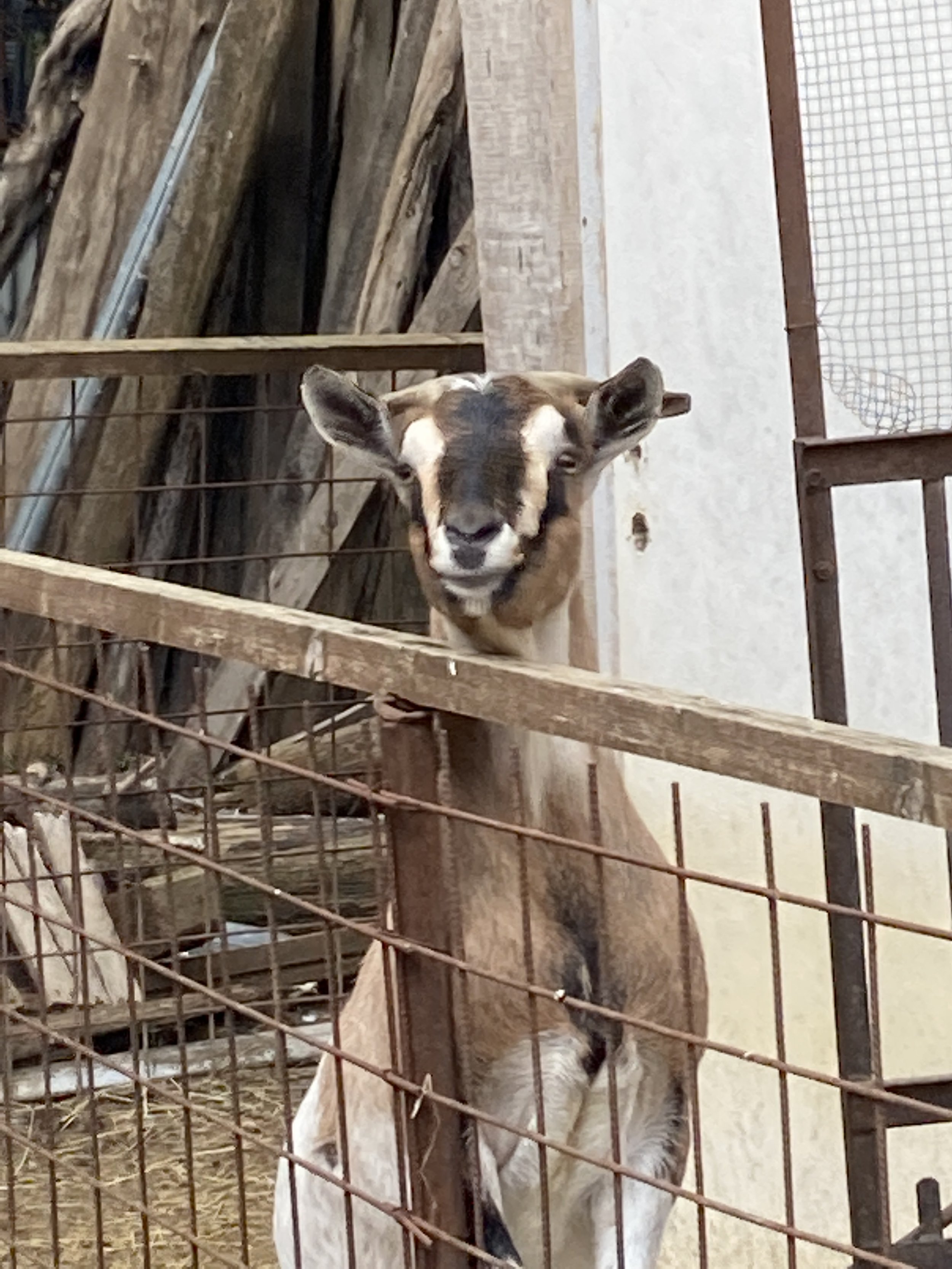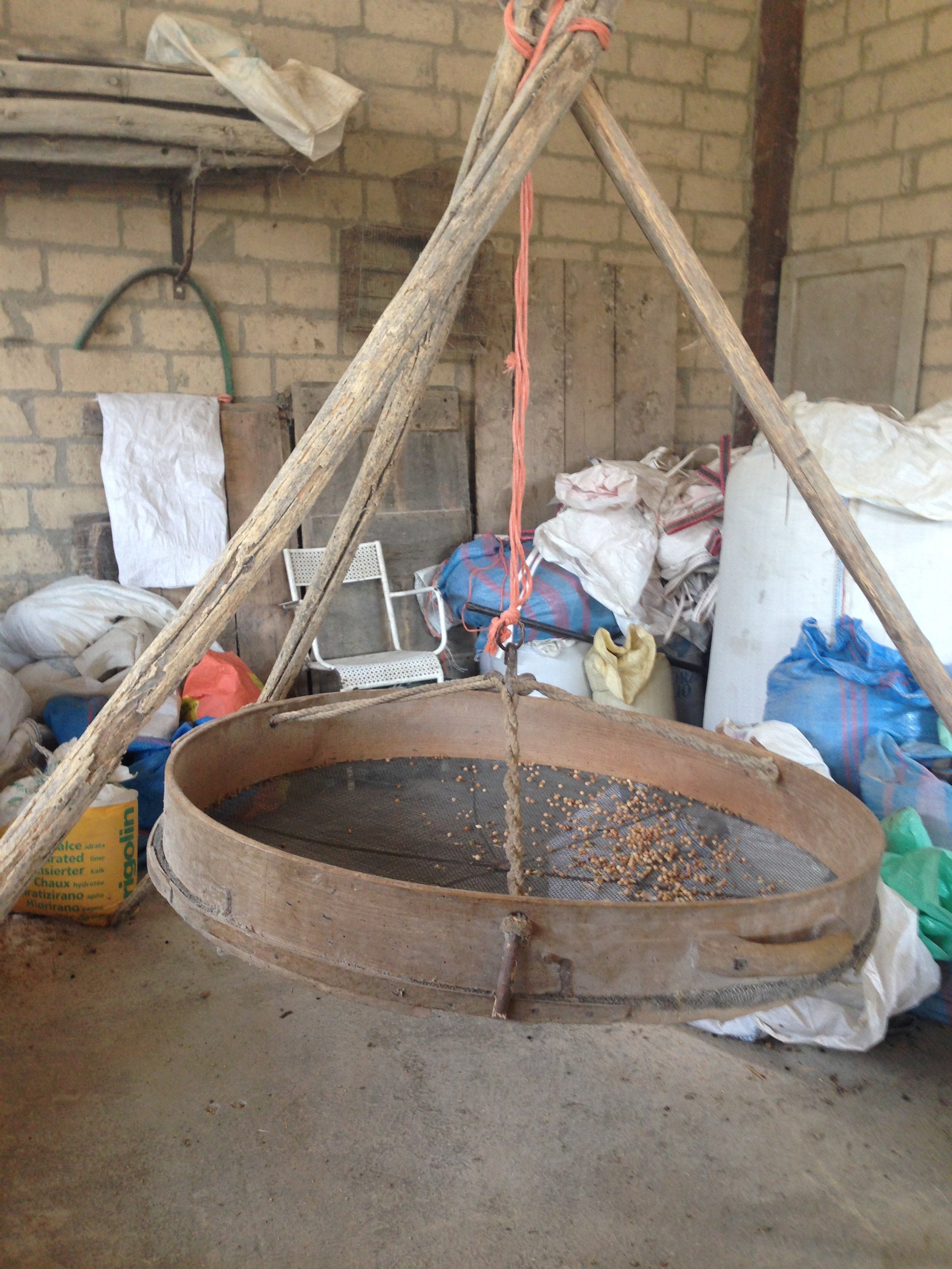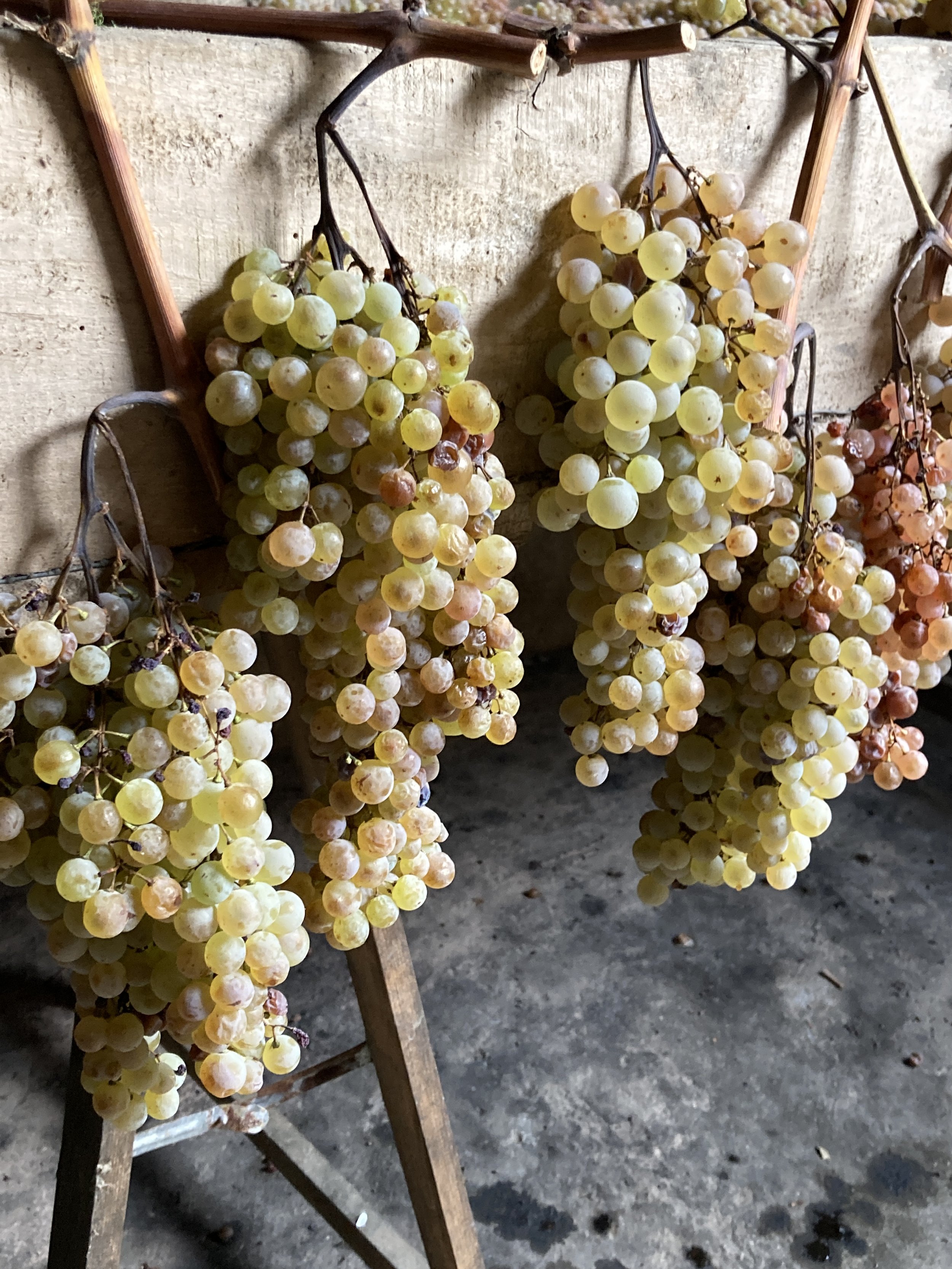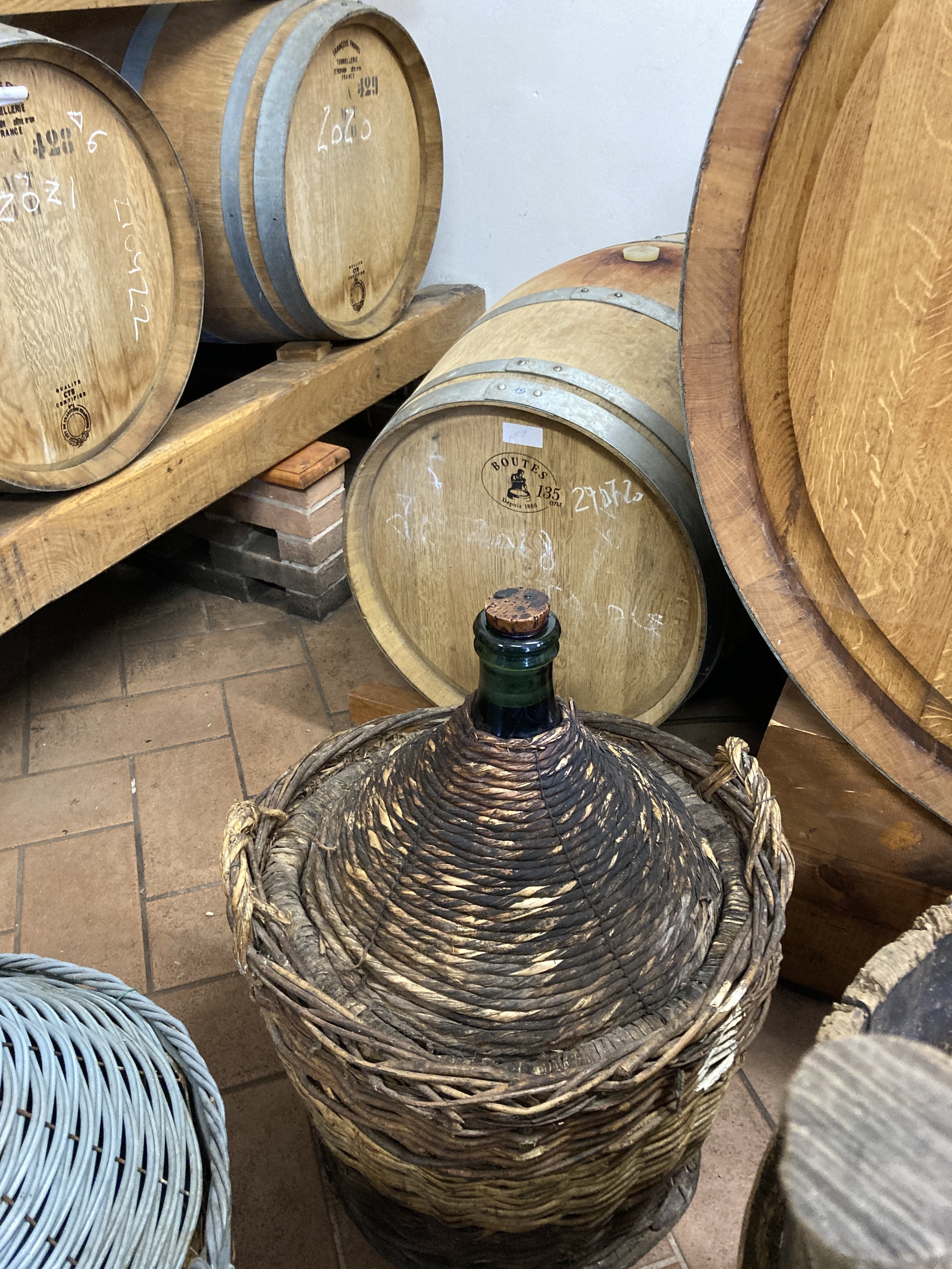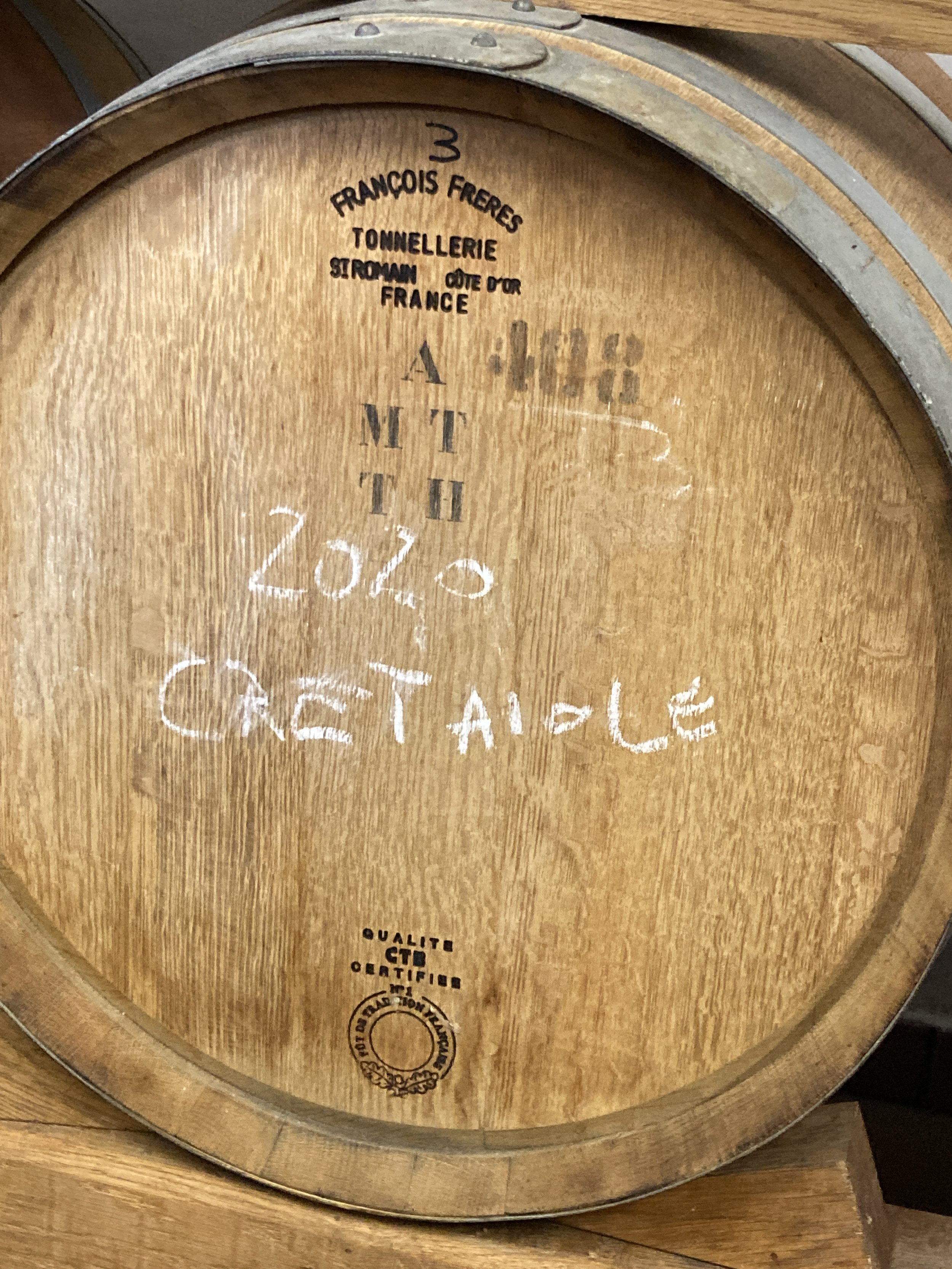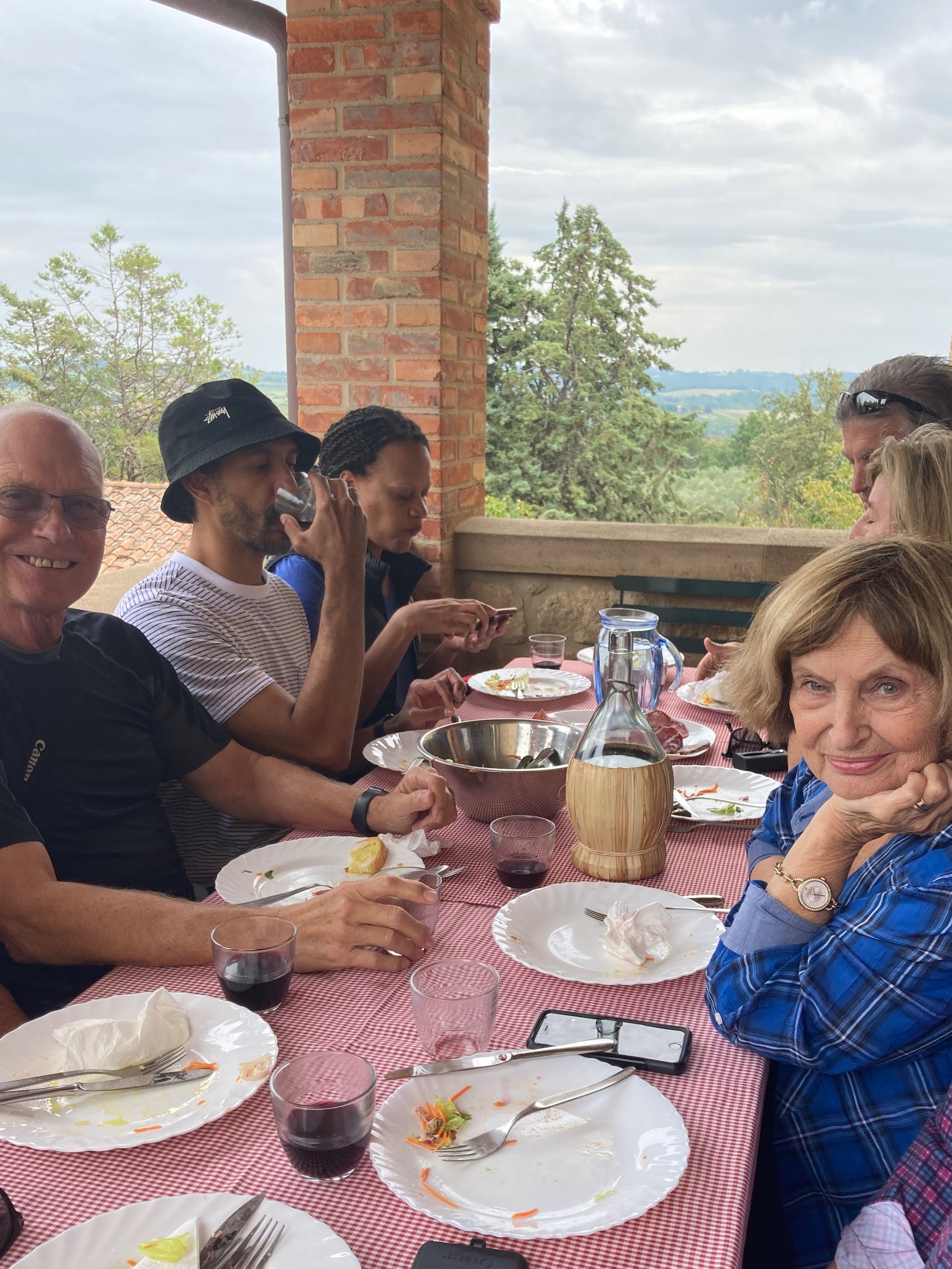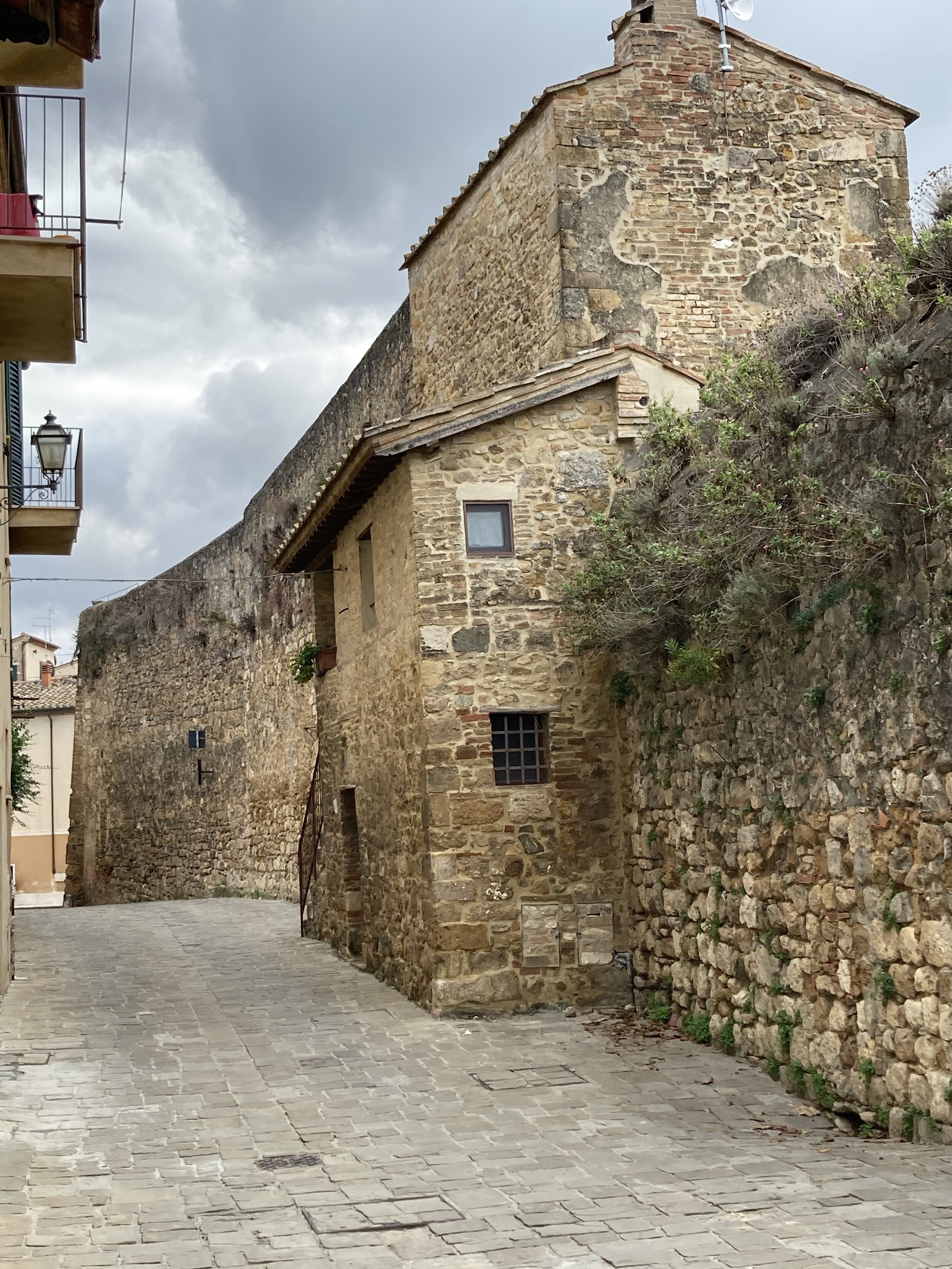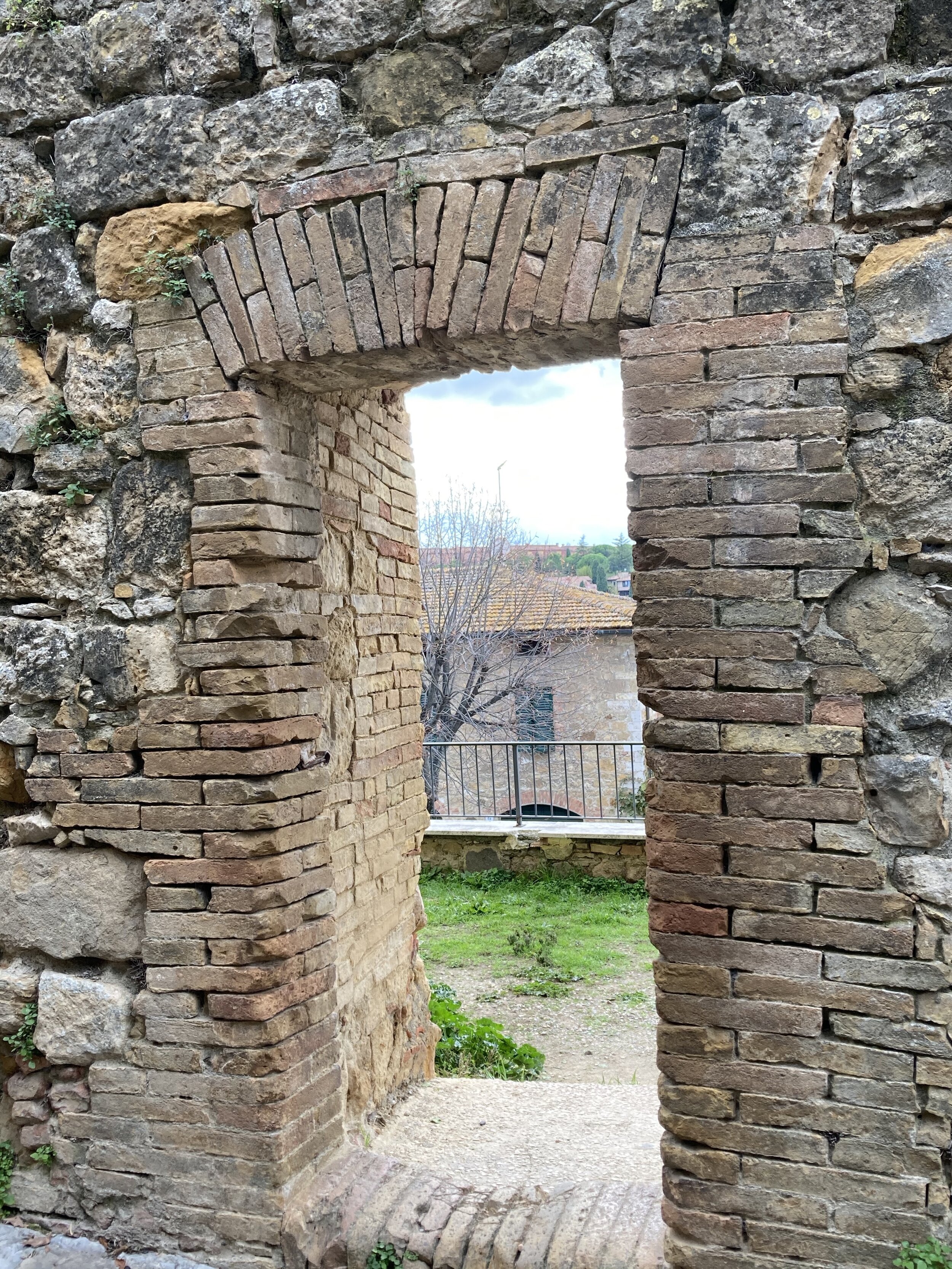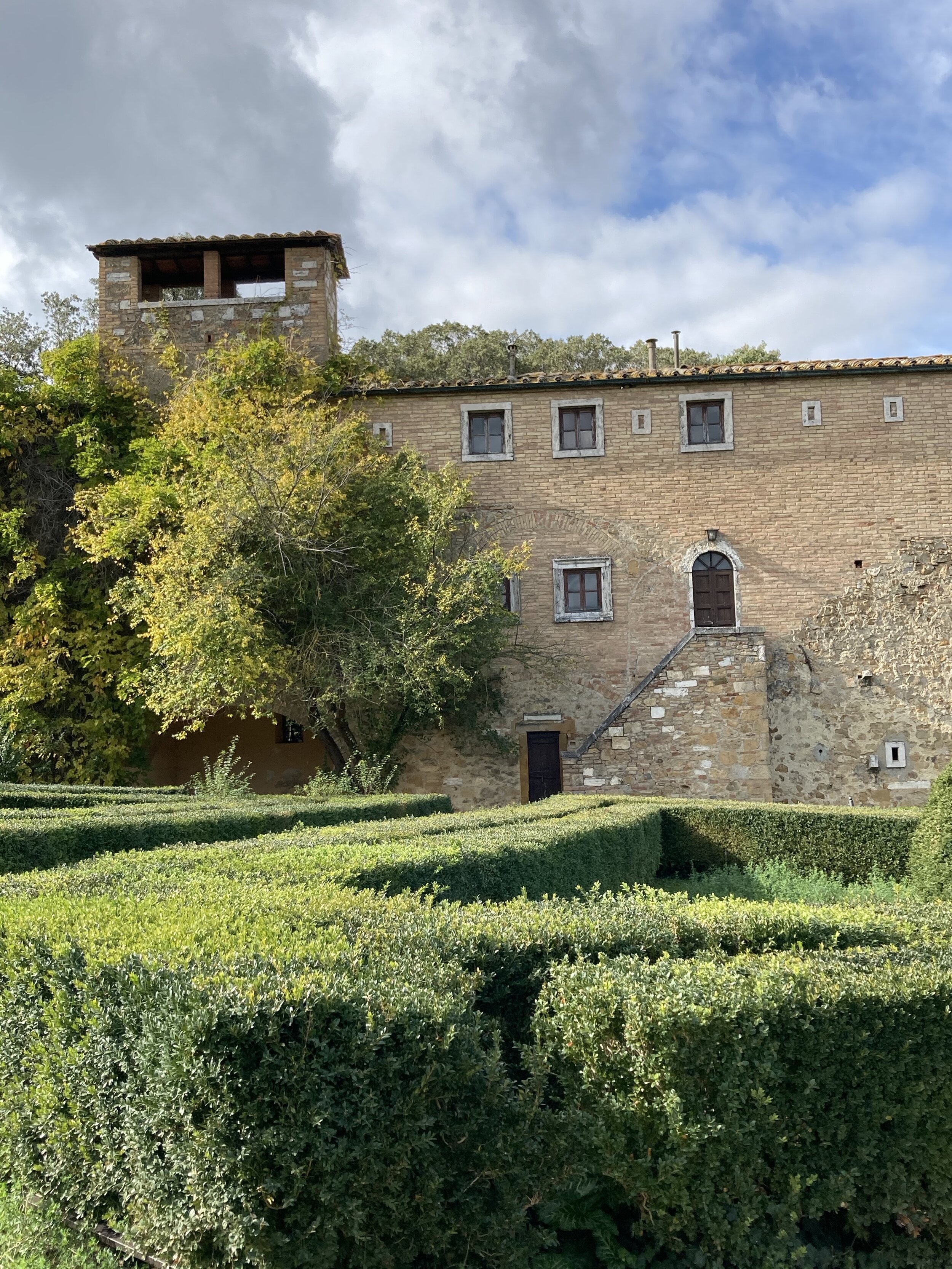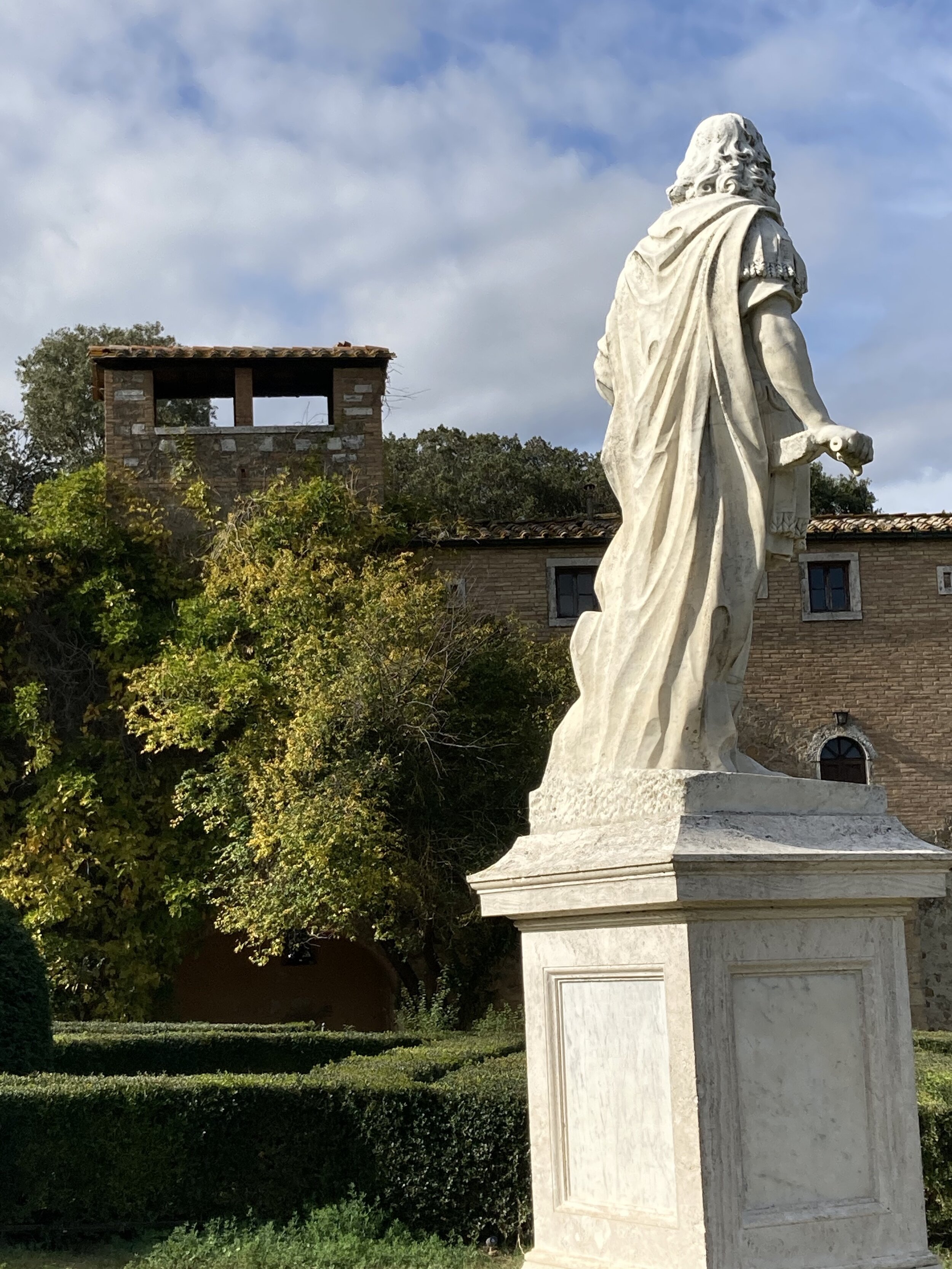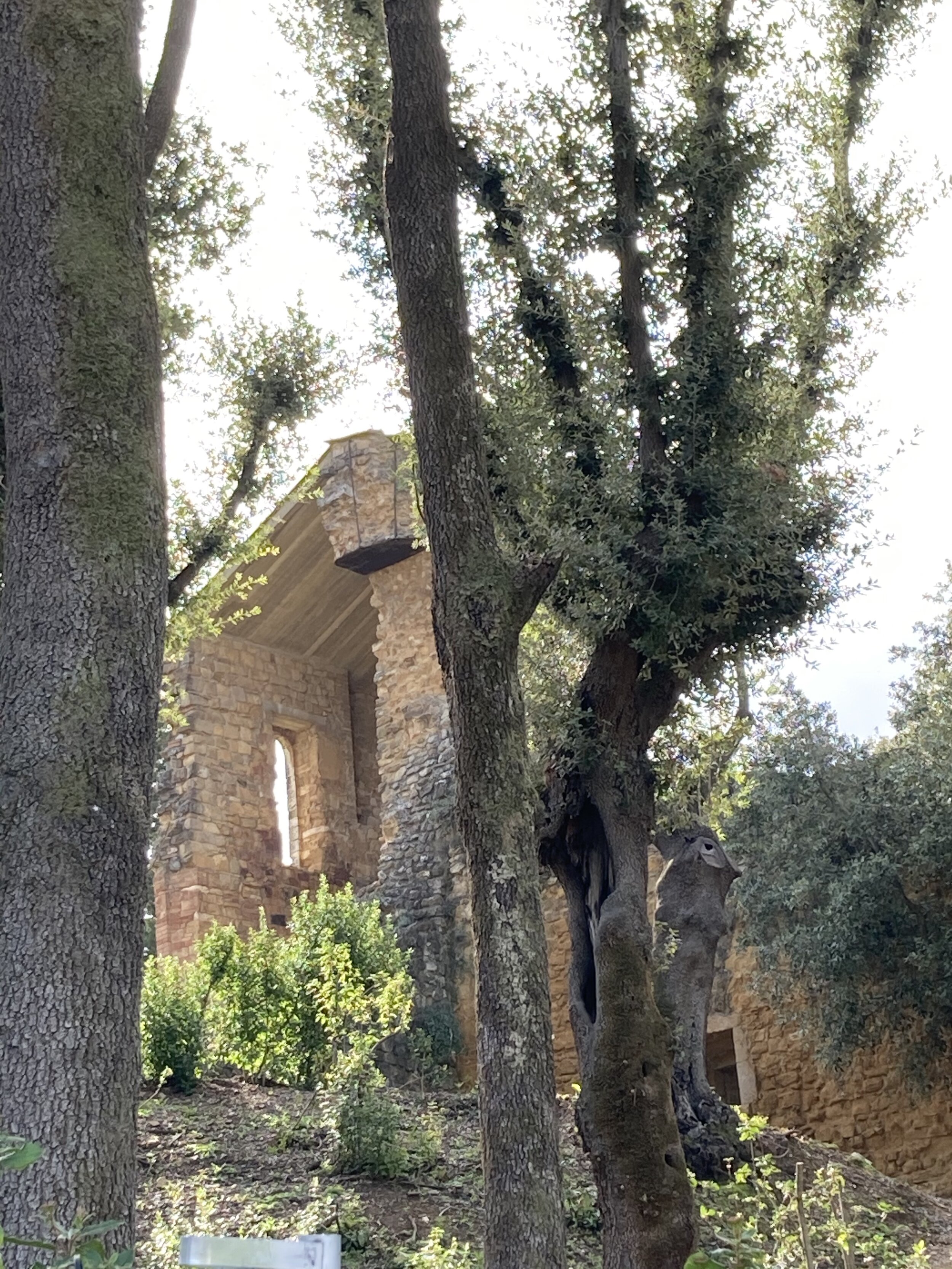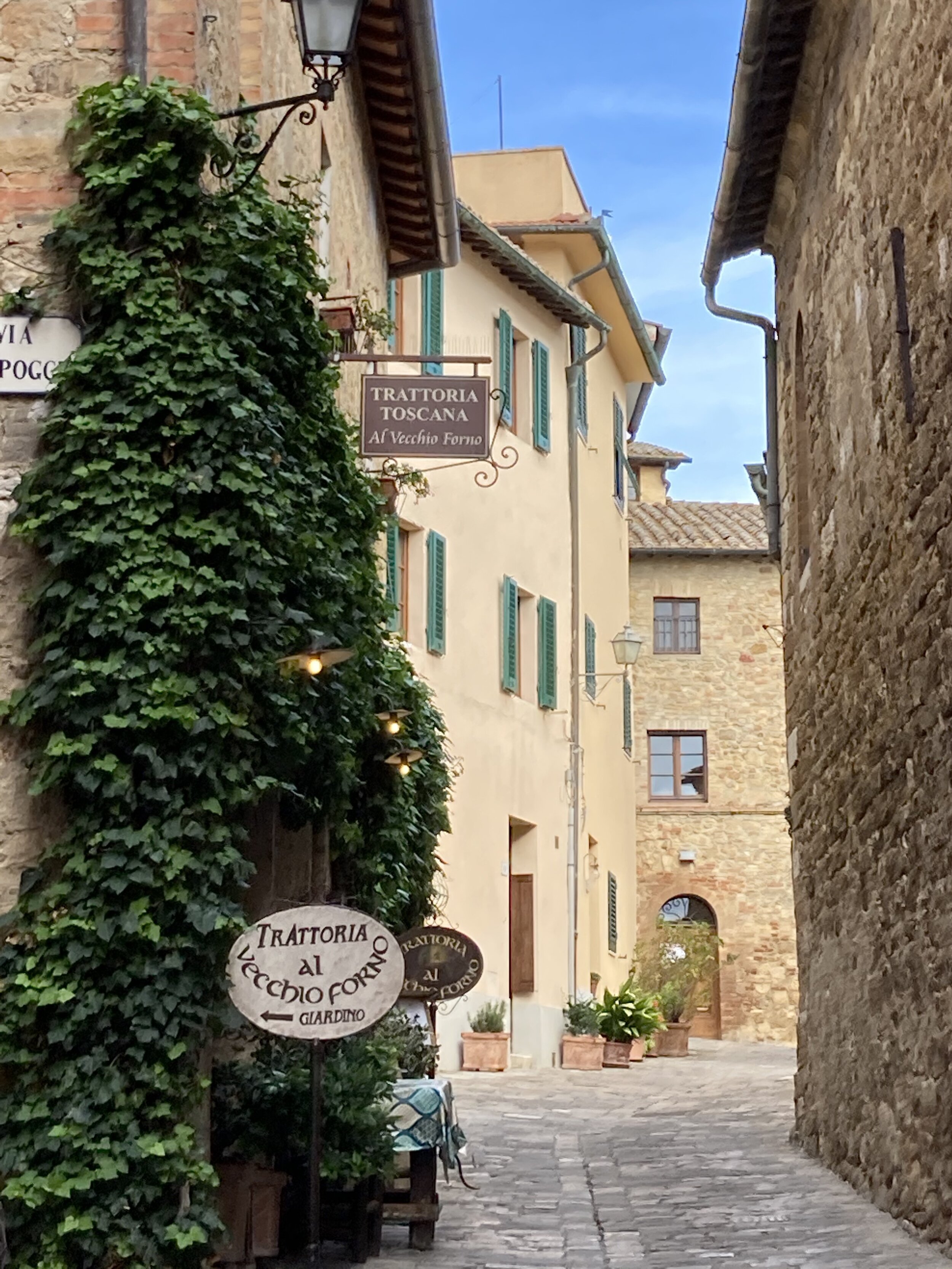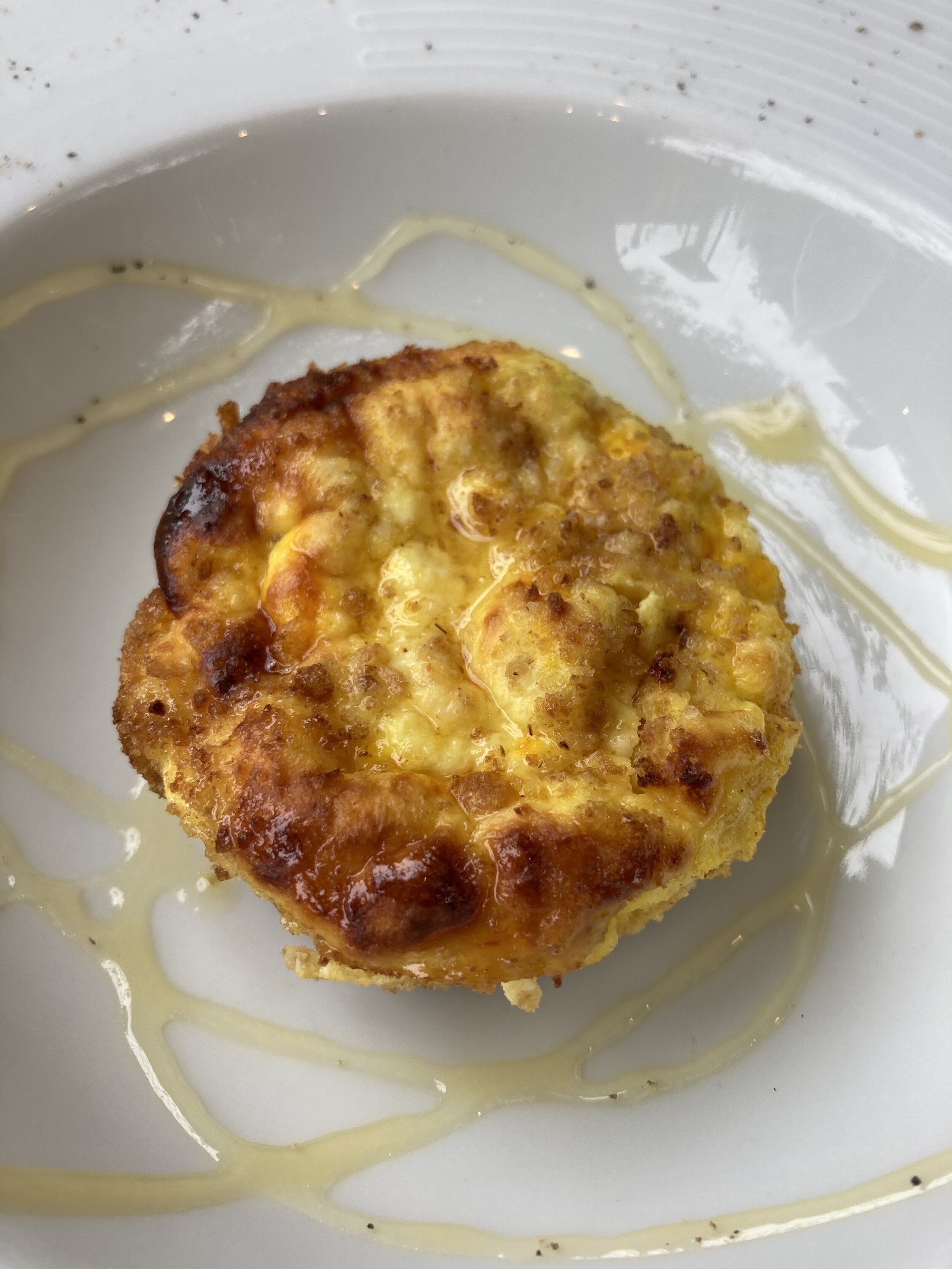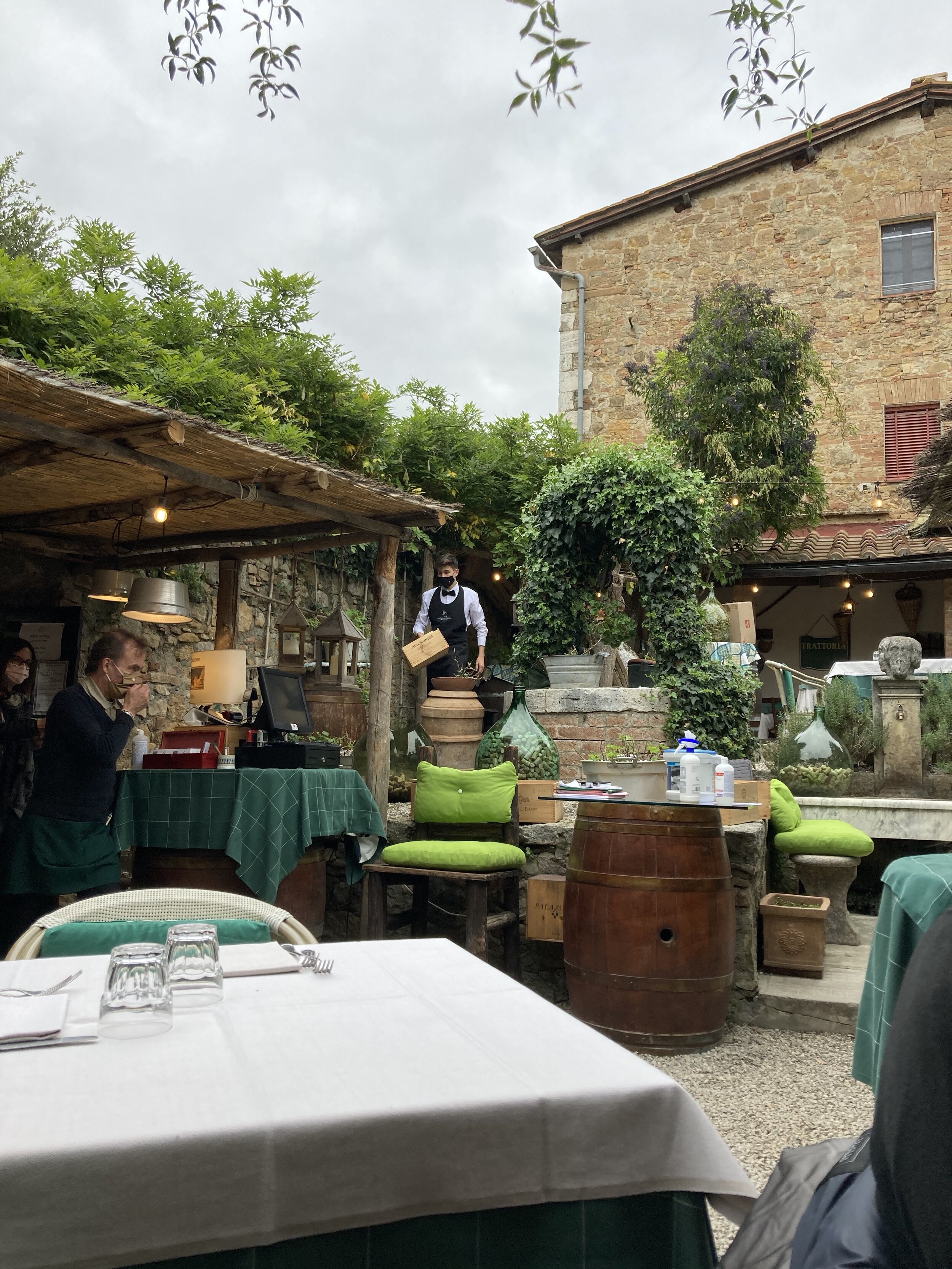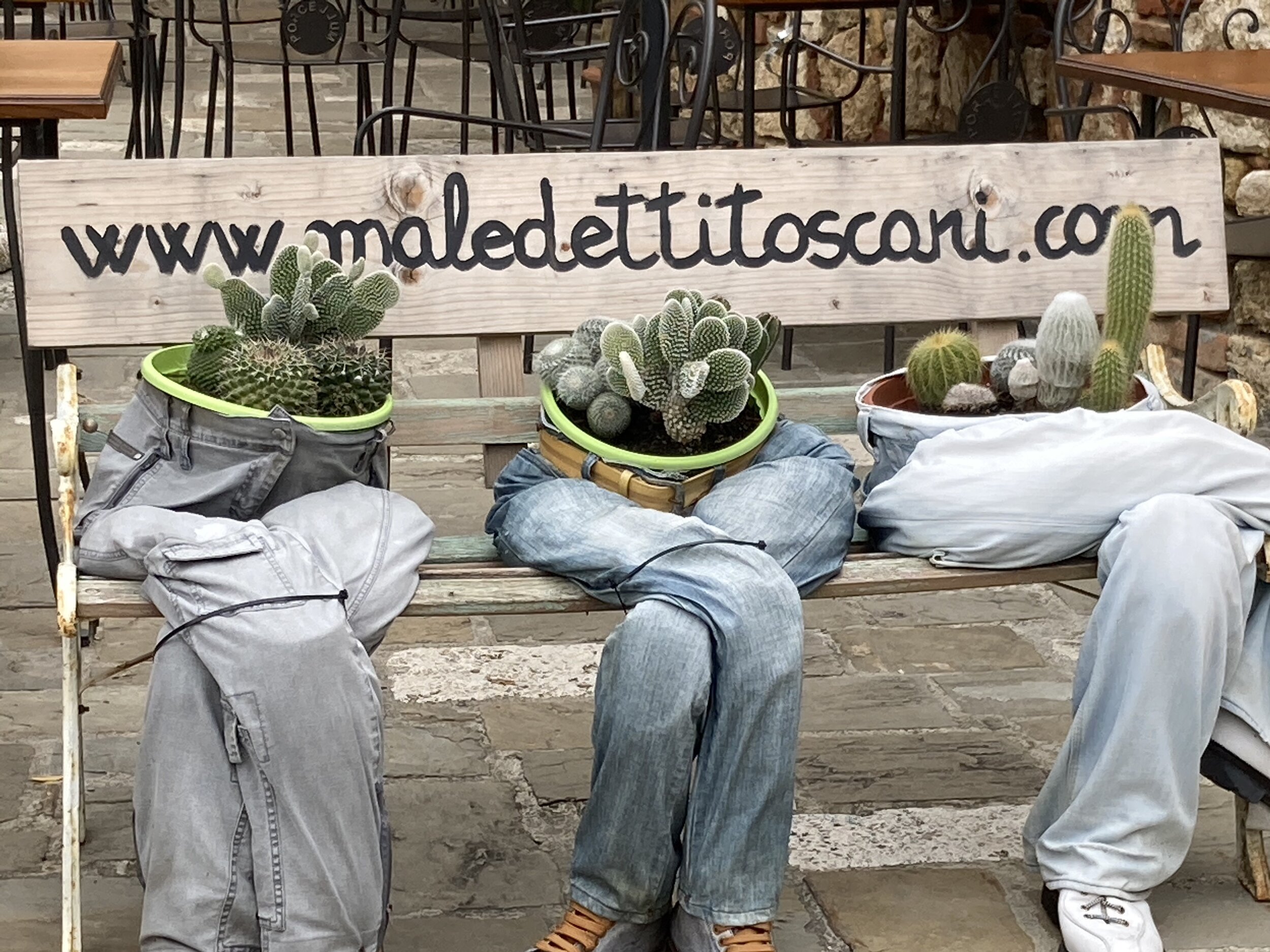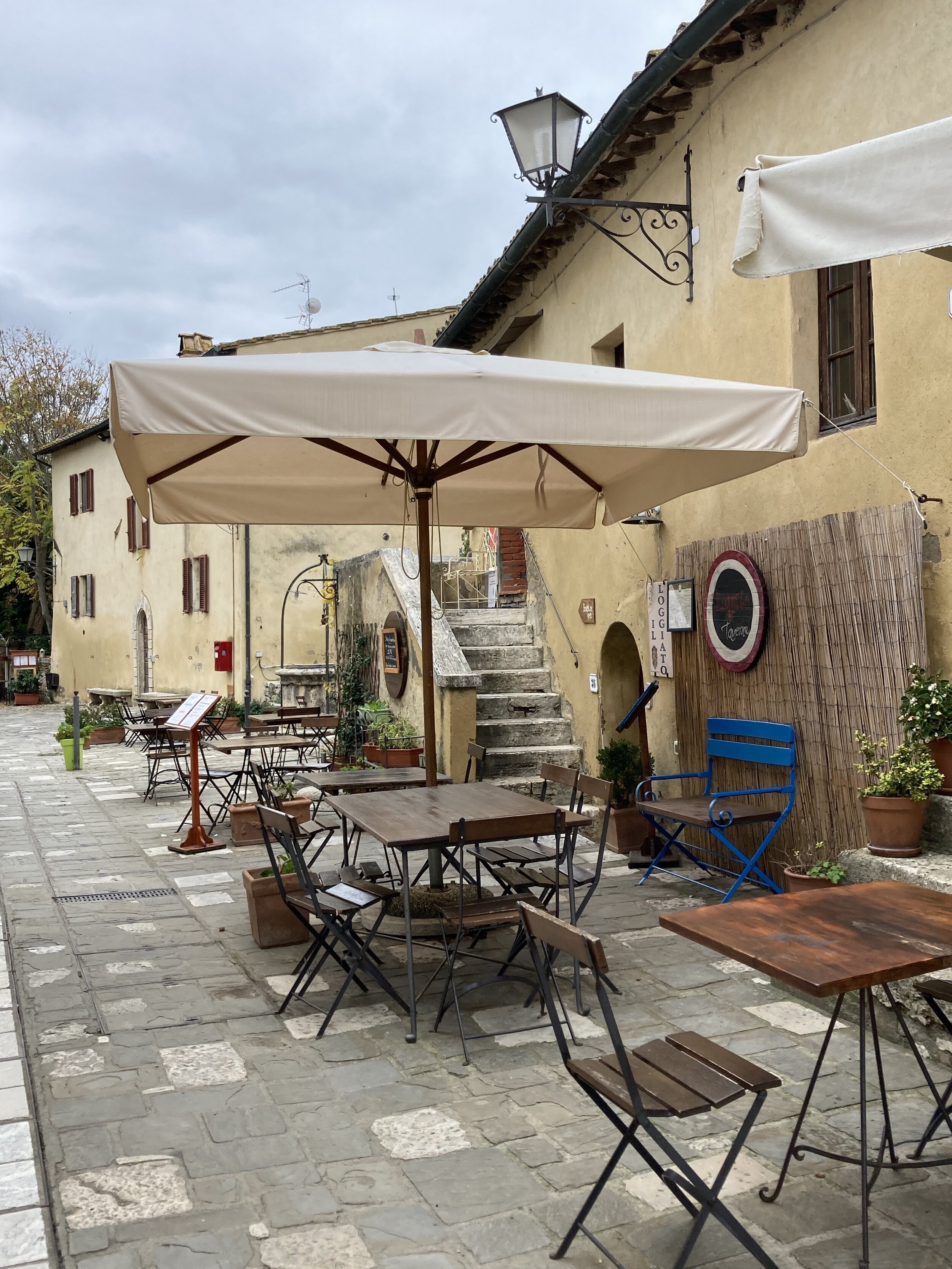Making Pici at Cretaiole
One of the highlights of any week spent at Agriturismo Cretaiole is the Pici class. Pici are strands of hand-rolled pasta, a sort of fat spaghetti, common in the part of Tuscany in and around the Val d’Orcia. At Cretaiole, be prepared to don an apron and participate! And bring an appetite for the big group dinner that takes place after the work of pici making is done.
Nicco teaching us how to make pici
Nicco Moricciani is the grandson of Luciano, Cretaiole’s founder, and the son of Carlo who tends the vines and olives. Nicco has recently taken over teaching the pici class from his mother Isabella. Isabella is quite proud of Nicco’s pici making skills and for good reason. Not only is Nicco an experienced pasta maker but he is also a fun and interactive teacher, sharing information and family stories throughout the class. Under Nicco’s guidance pici making is fun, rewarding, and occasionally hilarious. Let’s just say that there was a lot of laughter and good-natured teasing among the participants as we honed our skills (or lack thereof).
Class began with a demonstration of how to make the dough the way the family has done for generations.
Flour (type 00) is spread out on a big wooden board and then arranged volcano style in a circle with high sides to contain the wet ingredients. Some pici recipes add only water and a bit of extra virgin olive oil but at the Moricciani farm there are chickens and that means lots of fresh eggs. No surprise then that the Moricciani family recipe adds several eggs to the flour, water, and drizzle of oil. The wet ingredients are combined with a fork in the middle of the flour circle and then, little by little, the flour is coaxed from the sides of the ring into the egg mixture. It’s important not to break the flour ring lest the egg mixture leak out and dribble away. Nicco demonstrated this skill perfectly.
After the flour is incorporated, it is time for the guests to begin their work. Each gets their own wooden board and a portion of the dough to knead. When the dough is smooth and elastic it’s time for it to rest and for the guests to enjoy break time. A bit of Prosecco helped us get ready to the real fun - hand rolling the pici.
Rolling pici is an art and one that takes some practice. A bit of dough is rolled into a log and then the magic happens. One hand rolls the log while the other hand stretches the dough gently, eventually forming a long string of pasta. Not too fat and not too thin, all the pici should be about the same diameter. And with 20+ cooks each learning the process that was no easy feat!
The winner of the longest pici competition !
There was a friendly competition to see which guest could get the longest pici - and some gentle ribbing of those with the shortest pieces. All the laughter worked up an appetite!
Even those of us who managed fairly long and right-sized pici could not match the speed with which Nicco turned them out. We might have been there all night had not Cretaiole’s fabulous chief organizer, and really fast pici maker, Fernanda come along to help out. Our efforts were also bolstered by more wine and slices of toasted bread rubbed with garlic and generously topped with good Cretaiole Extra Virgin Olive Oil. It’s good to feed the pasta makers!
While we were making the pici the sun set, a fire was lit in the fire pit, more wine poured, and appetizers set out. Carlo also arrived to light the grill. He brought the farm’s meats to grill - sausage, pork ribs, and thick strips of pancetta. Can anything top the smell of a Tuscan barbecue on a mild fall evening? Carlo is the master of the grill!
Dinner started with our pici topped with Nicco’s ragu. We were pleased with our efforts as the pici was wonderful, though perhaps it was the delicious ragu that guaranteed great flavor. Cretaiole red wine was a perfect accompaniment. Later came salad and those tasty grilled meats. Just when we thought we couldn’t eat another bite, Fernanda brought out her homemade tiramisu. It’s a good thing Italian dinners are spread out over several hours.
So many things came together to make this a memorable evening. The setting was spectacular. The group of guests were a huge part of the fun - all were friendly, interesting, and enthusiastic about their time at Cretaiole. We shared stories and began friendships, with hopes to meet again.
The Moriccianis - Nicco, Carlo, and Luciano (who to everyone’s delight joined us for the evening) - are warm, welcoming, and fun. Fernanda (below, right) makes everything work, including this big event, and makes it look easy even though it certainly is not.
It was a perfect Tuscan evening full of friends, fun, good food, wine, and laughter. Who could ask for anything more?



